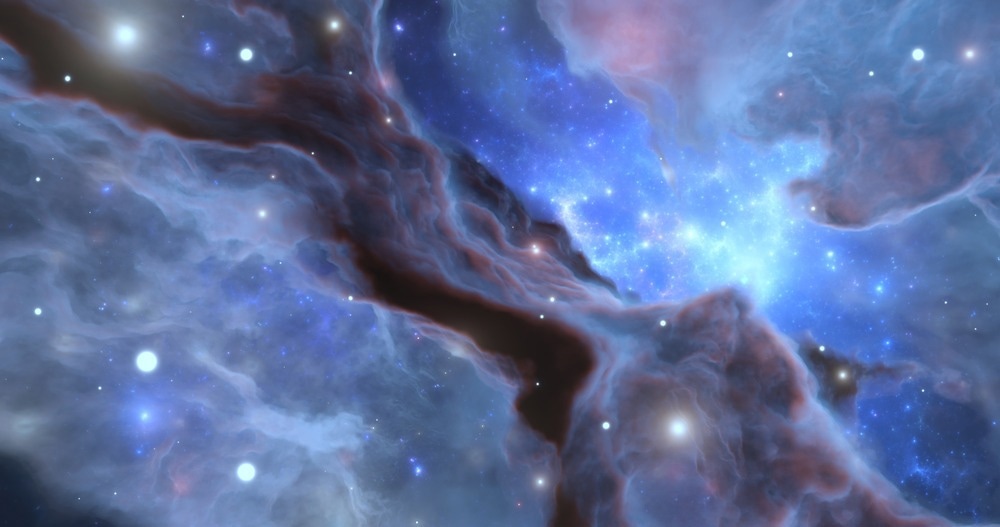Reviewed by Alex SmithMar 31 2023
In the young Universe, observations made by the radio telescope have disclosed a cold stream of intergalactic atomic carbon gas feeding star formation in a huge radio galaxy.
 Image Credit: Jurik Peter/Shutterstock.com
Image Credit: Jurik Peter/Shutterstock.com
The outcomes offer observational proof backing theoretical cosmological models and provide fresh ideas into the origins of the cosmic materials that allow star and galaxy formation.
The growth and evolution of the galaxies have been done by accreting gas, either in blends with other galaxies or from streams of cold molecular gas that thread via the intergalactic medium.
Simulations indicate that this latter kind of accretion, also called cold stream accretion, might be a main mechanism influencing the observed high star formation rates and quick development of galaxies earlier in the history of the Universe.
But, the basic physics of the cold accretion streams is yet to be well understood, and, as a result of their elusive nature, it has been hard to note and verify the presence of such streams feeding huge galaxies.
With the help of the Atacama Large Millimeter/submillimeter Array (ALMA), Bjorn Emonts and collaborators mapped the atomic carbon gas encircling the galaxy 4C 41.17—a huge radio galaxy present in the early Universe at redshift 3.8.
For the radio telescopes’ surface brightness sensitivity to be maximized, Emonts et al. made use of ALMA’s highly compact and low-resolution configuration. According to the authors, this probably helped them detect a cold molecular stream where earlier performed studies have failed to do it.
The submillimeter observations showed a narrow stream of cold gas going up to at least 100 kiloparsecs (approximately 326,000 lightyears) outside the galaxy and into the intergalactic medium. It is a distance that is several times larger compared to the galaxy it seems to be feeding.
As per the authors, the observations are persistent with cold gas streams that have been anticipated by cosmological models. Also, the mass of the cold atomic gas being funneled into the huge galaxy could fuel star formation for over 500 million years.
Having observations that match well to previous predictions from simulations has been long in the making. Further observations of cold streams that span a broad range of galaxies are needed to determine the processes that feed gas into galaxies.
Caitlin M. Casey, University of Texas
Journal Reference:
Emonts, B. H. C., et al. (2023) A cosmic stream of atomic carbon gas connected to a massive radio galaxy at redshift 3.8. Science. https://www.science.org/doi/10.1126/science.abh2150.